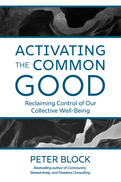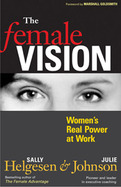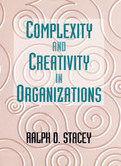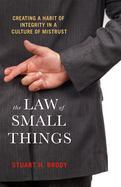By 2045 Latinos will make up 1 in 4 Americans. They are projected to be 78% of the new entries into the labor force in the next ten years. By sheer numbers alone, Latinos will shape the 21st Century. What does it take to lead such a varied and vibrant people who hail from twenty-six countries and are a blend of different races? And what can leaders of all cultures and ethnicities learn from how Latinos lead?
Juana Bordas takes us on a journey to the very heart and soul of Latino leadership. She offers 10 principles that richly illustrate the inclusive, people-centered, socially responsible, and life-affirming ways Latinos have led their community. This model is uniquely suited to this century's multicultural, global age.
This new and expanded edition includes a chapter on intergenerational leadership that recognizes vast generational shifts are occurring: ten thousand Baby Boomers retire every day and Millennials and Zs are the largest generations in history. Six out of 10 Latinos are millennials. This new chapter can guide us in preparing the next generations to take the helm of leadership.
This unprecedented and wide-ranging book shows that Latino leadership is indeed powerful and distinctive and has lessons that can inform leaders of every background.
This book counters the dominant and destructive story that we are polarized, violent, selfish, and destined to consume everything in sight. That is not who we are.
The challenge, Peter Block says, is that we are suffering under an economic theology that is based on scarcity, self-interest, competition, and infinite growth. We're told we can purchase and outsource all that matters. Block calls this the business perspective narrative. It dominates not only the economy but also architecture, faith communities, journalism, arts, neighborhoods, and much more.
Block offers an antidote: the common good narrative. It embodies the belief that we are basically communal and cooperative. And that we have the capacity to communally produce what we care most about: raising a child, safety, livelihood, health, and a clean and sustainable environment.
This book describes how shifts to the common good perspective could transform many areas, fostering journalism that reports on what works, architecture that designs habitable spaces creating connection, faith collectives that build community, a market that is restrained and local, and leadership and activism that build social capital by creating trust among citizens. With these shifts, we would fundamentally change the world we live in for the better.
2025
Experience 7 practices combined with powerful frameworks to create a more integrated and conscious future from the bestselling author of Theory U.
We are living in a time of unprecedented crisis and breakdown. But amid the chaos, small "islands of coherence" are emerging-localized pockets of pioneering thought leaders taking action to begin to catalyze multi-system transformation.
Incorporating proven frameworks like Social Fields and the Collective Evolutionary Mirror, the authors share transformative real-world stories of these islands of coherence from the frontlines of change across the globe. You'll go inside the experiences of paradigm-shifting change makers and gain powerful practices for sensing and actualizing the future that wants to emerge.
This book outlines 7 critical contributions for elevating our civilization including:
•becoming aware
•generative listening
•dialogue and co-sensing
•presencing
•ecosystem leadership
•co-creating across boundaries
•build unity
With this holistic guide, you'll discover how your local actions can cascade into a planetary movement for human and ecological flourishing. The next renaissance is emergent-be a part of birthing it into reality.
2010
• What women see matters to organizations
• What women notice is what organizations need now
• What women value Will Define Organizational Excellence in The Future
Women often see the world from a different angle than men. But this fact has been overlooked in most organizations. In this brilliant and strongly argued new book, Sally Helgesen and Julie Johnson demonstrate why “the female vision”—what women notice, what they value, how they connect the dots—constitutes women's most powerful asset in the workplace. Drawing on multiple strands of research, including their own Satisfaction Profile Assessment, they show what companies must do to engage, energize, and support talented women. And they show women how to nurture and sustain their own greatest gifts.
-
Groundbreaking new insights from the author of The Female Advantage
-
Redefines what women have to offer to the world
-
Provides a fresh and actionable perspective for organizations seeking to leverage women’s best talents
Women see the world through a distinctive lens. What they see is defined by what they notice, what they value and how they connect the dots. In this brilliant and strongly argued new book, Sally Helgesen and Julie Johnson demonstrate why the female vision constitutes women’s most powerful asset in the workplace and show how women and organizations can use it to strong advantage.
The authors describe the three elements of the female vision and explore the specific benefits that each provides. Women’s capacity for broad-spectrum notice widens the scope of information available to organizations and provides vital clues about relationships, shifting markets and potential conflicts. Women’s focus on the quality of day-to-day experience rather than abstract measures of achievement provides a way to restore balance to a 24/7 workplace in which endemic stress has become routine. Women’s penchant for viewing work in a larger social context offers a powerful means for moving beyond sterile game metaphors to engage motivation at a profound and authentic level.
The extraordinary power of the female vision has been overlooked because it is countercultural in most organizations and because its benefits have been difficult to measure. But as Helgesen and Johnson make clear, the advent of a team-based, service-oriented interconnected global business environment that seeks customized markets and must stir the passions of highly diverse employees requires precisely the skills that the female vision encompasses. The potential pay off to organizations in terms of creativity, strategic insight and the ability to engage and inspire diverse talents is undeniable.
Drawing on multiple veins of research, including their own Satisfaction Profile survey, the authors offer a totally fresh and even startling perspective on the true value that women bring to work. The Female Vision lays out exactly what companies must do to engage, energize and support talented women, and shows women how to nurture and sustain this power.
Today's business environment is characterized by faster technology development and information flow, increasing interconnectedness between organizations, and the much greater diversity between people that this brings. These changes make it increasingly difficult for us foresee the consequences of our actions and stay "in control." Traditional organization theory, however, mandates that we design organizations and predict outcomes, conditioning us to assume that there is no alternative. According to this framework, we simply must foresee and stay in control, for without this there can be no order, only anarchy.
Complexity and Creativity in Organizations explains why managers in organizations cannot use projected future outcomes in action planning because future outcomes are radically unpredictable. Ralph Stacey shows how creative futures emerge from spontaneously self-organizing processes of complex learning. Complexity and Creativity in Organizations is the most comprehensive and thorough treatment of how the study and management of organizations need to change to be in tune with what we are learning from the new science of complexity. In it Stacey presents an entirely new framework for understanding life in organizations.
Combining insights from the new science with insights from psychoanalysis, Stacey posits that repressing the anxiety caused by the unstable, ever-changing nature of today's business world also represses the creative impulses-the "spaces for novelty"-that allow members of a work force to produce their best work. Organizations are creative, he says, when they operate on the edge of chaos. Thus, we should not ask how we can control the future, but rather how we can make sense of our own real, personal experience of life in organizations.
In Complexity and Creativity in Organizations , Stacey details this theory, and offers a new framework for organizations to follow. Using the science of complexity as a starting point, he pulls together many insights into behavior and organizational functioning that currently lie at the fringes of research and practice. This book invites people to explore what the new science might mean for understanding life in organizations, and shows how it can be used as a framework for understanding the processes that produce emergence rather than intentional strategies. Stacey presents an entirely new perspective on what it means for an organization to learn.
- From a pioneer in the application of the new science for understanding life in organizations
- Demonstrates what leadership means in an environment where control is impossible
- Provides a rigorous model of the learning organization that takes into account the real-life anxieties involved
The Law of Small Things begins with an IQ (Integrity Quotient) test designed to reveal the casual way we regard our promises and the misconceptions we have about acting truthfully. The book shows how most people believe that integrity is something we “just have” and that we just do, like a Nike commercial. It depicts these and other deceptions we deploy to appear to act with integrity without actually doing so.
The Law of Small Things also exposes how our culture encourages breaches of integrity through an array of “permitted promise-breaking,” a language of clichés that equates self-interest with duty, and the “illusion of inconsequence” that excuses small breaches with the breezy confidence that we can fulfill integrity when it counts.
Brody challenges the prevailing notion that integrity is a possession you hold permanently. No one “has integrity” and no one is perfect in practicing it. What we have is the opportunity to uphold promises and fulfill duties in each situation that faces us, large and small. Integrity is a practice and a habit of keeping promises, the ones we make explicitly and the ones that are implied in all our relationships.
Ultimately, developing skill in the practice of integrity leads us to knowledge of who we are--not in the way the culture defines us, but in the way we truly know ourselves to be.





















